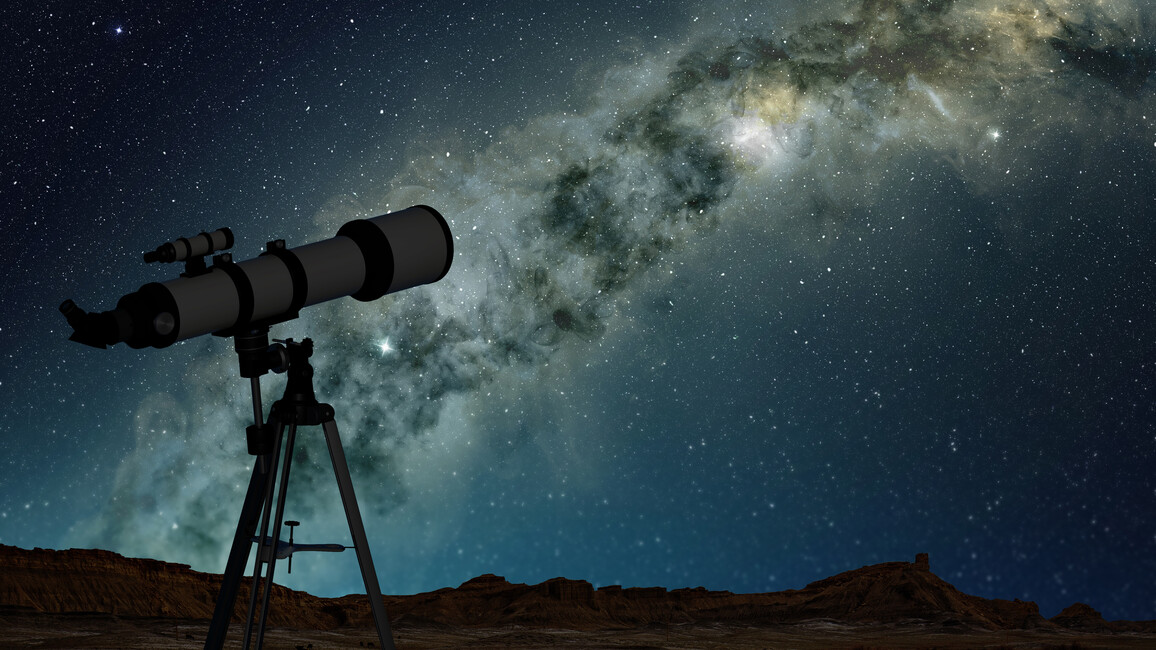Contents
Thousands of years ago, people looked up at the stars full of fascination. The sun, the moon and the tiny sparkles in the firmament were frequently connected to myths and gods. Later, observation of the cosmos became increasingly systematic and demonstrable facts replaced mystic interpretations. Today, Nicolaus Copernicus is considered the father of modern astronomy. Galileo Galilei revolutionized the observation of the sky by using his telescope. Germany in particular has a successful history of studying the universe - Johannes Kepler, Caroline Herschel or Karl Schwarzschild all transformed our understanding of how the cosmos is connected.
Our view of the universe
Humans study the universe in a vast range of ways, using a variety of methods, equipment and experiments. We conduct space research with satellites and space probes as well as space telescopes, which are used to measure cosmic rays in wavelengths that are absorbed by the earth atmosphere. Find out more here. Space can be studied in many ways, one method is directly from earth – this is known as earthbound astronomy. Researchers use observatories and telescopes on Earth to receive and analyse different signals and images from deep space. These are combined with data from space telescopes and wavelength measurements. A comprehensive overview of all the research infrastructure that Germany is involved in can be found here.
Even if the universe still holds many mysteries, Germany has been involved in several of the scientific milestones that have been achieved in recent years. Two prominent examples are the demonstration of gravitational waves and of a supermassive black hole in the Milky Way. Both scientific breakthroughs were honoured with the Nobel Prize for Physics.
Scientists use all manner of research infrastructures for the earthbound observation of the universe, in particular the instruments used at the various telescopes. Each of these instruments is completely unique because they are each specialized to receive specific signals from space in different wavelengths. However, only when the observations from all wavelengths from earthbound and space telescopes are combined, can a comprehensive picture take shape.
Astronomy – driver of technology and generator of knowledge
The measuring tools to study space are developed at the frontier of what is possible, in cooperation with highly specialized commercial enterprises. Such high-end developments increase the innovative strength and competitiveness of the economy. Just as important as the equipment are the data analysis methods – highly complex computer codes which sometimes even use the full capacity of the fastest supercomputers in the world. New answers are continually needed for the ever-changing challenges posed by the associated computing algorithms.
Astronomic research has also produced applications for our daily lives which might never have been developed without these in-depth questions: from ceramic hobs and bifocal lenses to the mathematical basis of the Global Positioning System (GPS) and CCD sensors for digital cameras or WiFi technology, all the way to medical imaging technology or innovative dentistry lasers.
Cooperation and structural aid
A hundred years ago, many astronomical observatories were found close to major universities. Today, the large telescopes are built in remote areas with reliably good weather, dark night skies and low air turbulence – primarily in the global South.
Astronomic research institutions and observatories are therefore hubs for international cooperation and international understanding. Mega-projects, such as the telescopes of the European Southern Observatory (ESO) in Chile, require years of planning and construction until their completion.
Thousands of researchers, technicians and engineers from different countries are involved in making these projects reality. This strengthens international cooperation and the integration of science systems.
What we provide funding for
Germany is involved in the construction and maintenance of several different telescopes. The BMBF funds the development and construction of observation instruments, detector systems and evaluation methods. Some of the world's biggest and most complex observatories are currently under construction. They will be the large research facilities of the next generation and pave the way for new studies of the universe:
- The ELT (Extremely Large Telescope) is being built in Chile. It is currently expected that construction will be completed in 2027. With a mirror diameter of almost 40 metres, it will be the biggest optical telescope of all time. Researchers want to use the ELT to discover new planets and even hope to study the composition of their atmospheres.
- The SKAO (Square Kilometre Array Observatory) will be the biggest radio telescope in the world. It is expected to become operational in 2028. Spread across two sites in Australia and South Africa, researchers will use hundreds of parabolic dishes and thousands of radio antennae to gather new insights into how the universe developed after the Big Bang.
- The CTAO (Cherenkov Telescope Array Observatory) is a next-generation gamma radiation observatory. By 2028, a total of 60 individual telescopes will be set up in Spain and Chile. CTA is to enable researchers to answer previously unsolved questions about galaxies, black holes and dark matter.
The BMBF’s ErUM-Pro project funding is awarded under the ErUM framework programme ("Exploration of the Universe and Matter – ErUM") and will facilitate excellent basic research using these facilities. It also strengthens the close cooperation between university groups and operators of large facilities. German researchers will thus gain access to the world's most modern observatories and continue to develop their instrumentation. Only by doing this, can Germany maintain its leading position in this research field in the long term.
We also promote dialogue with society in high-profile formats such as the Science Years. The many small and larger projects help inform the public about the smaller and larger successes of the research community and also strengthen societal participation and citizen science.
-
131,072
Number of planned radio antennae in the Square KilometreArray Observatory (SKAO)
-
39
Diameter of the mirror of the Extremely Large Telescope (ELT) inmetres
-
300,000
Speed of light in metres per second
-
1/2000
… the diameter of a proton – the precision with whichgravitational wave detectors can take measurements


